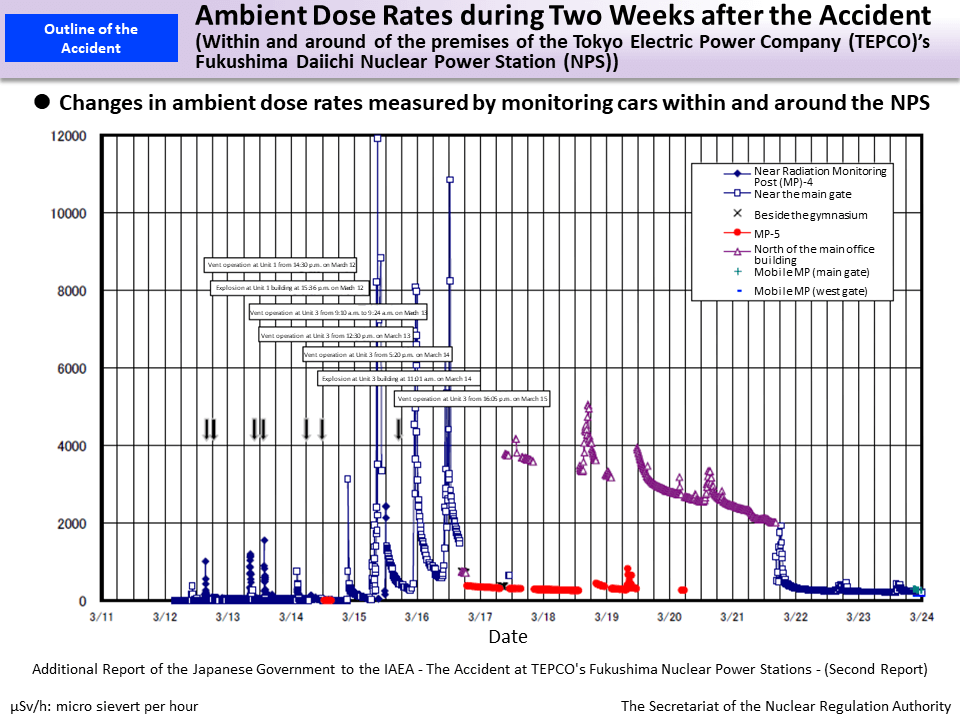Ambient Dose Rates during Two Weeks after the Accident
(Within and around of the premises of the Tokyo Electric Power Company (TEPCO)'s Fukushima Daiichi Nuclear Power Station (NPS))
In accordance with the progress of events, radioactive materials were released into the air due to containment vessel vent operations and explosions at reactor buildings. Vent operation at Unit 1 was considered to be successful as the pressure in the containment vessel declined at 14:30 p.m. on March 12. Due to the radioactive plume discharged at that time, an ambient dose rate of approx. 1 mSv/h was detected. On March 13, the following day, the ambient dose rate clearly increased again. This is considered to have been caused by vent operation at Unit 3 conducted after the water level in the reactor declined and the fuel was exposed from cooling water. At 9:00 a.m. on March 15, the highest rate of approx. 12 mSv/h was observed. Early in the morning at around 6:00 a.m. of that day, the pressure of the pressure suppression chamber declined at Unit 2 with the sound of an explosion. Therefore, the high dose rate on March 15 is considered to have been caused by the release of radioactive materials from Unit 2.
Ambient dose rate increases were also measured at 23:00 p.m. on March 15 and at 12:00 p.m. on March 16. Pressure decline in the containment vessel was observed in Unit 3 and Unit 2, respectively, and these ambient dose rate increases are considered to have been caused by the release of radioactive materials from Unit 3 and Unit 2.
- Included in this reference material on March 31, 2013

